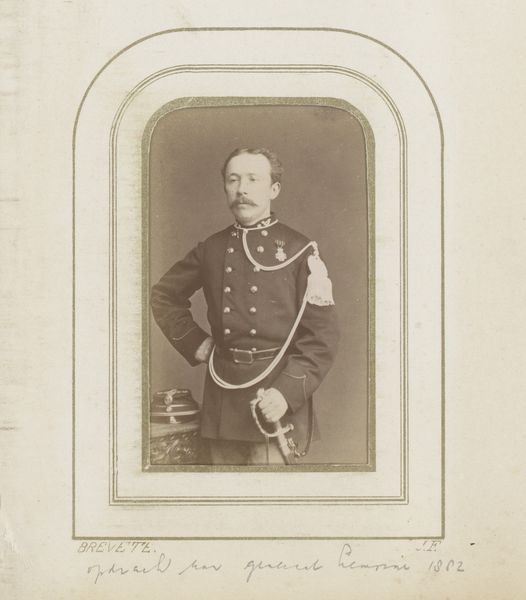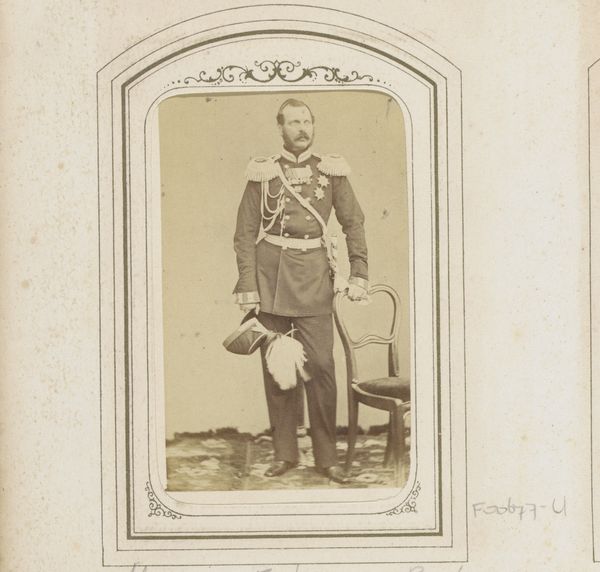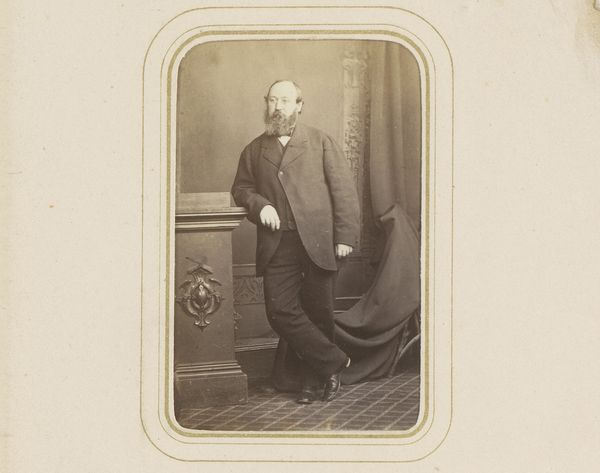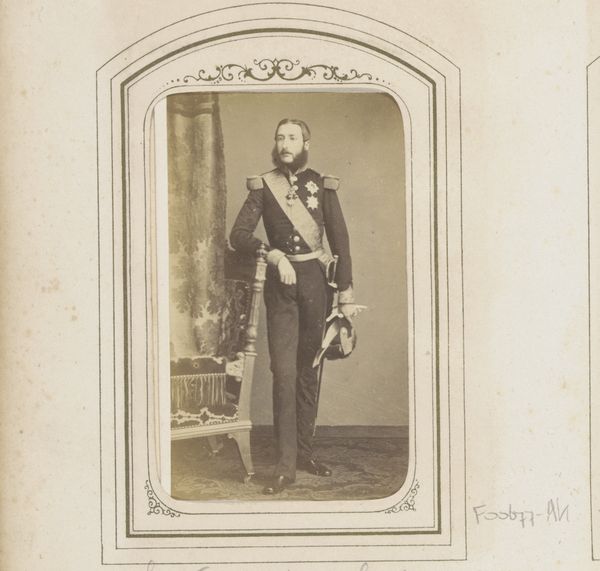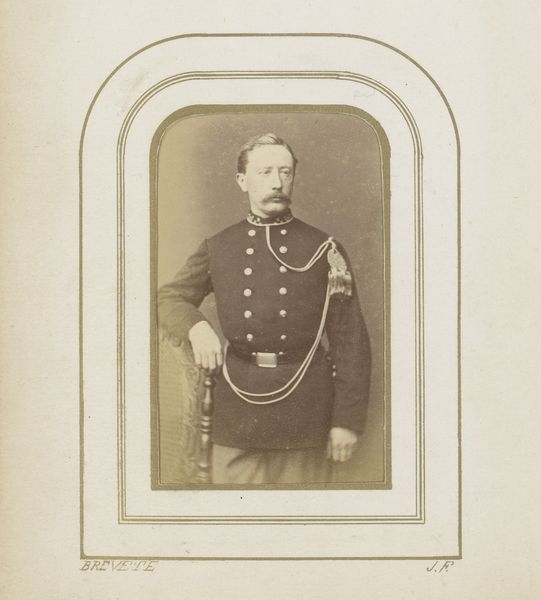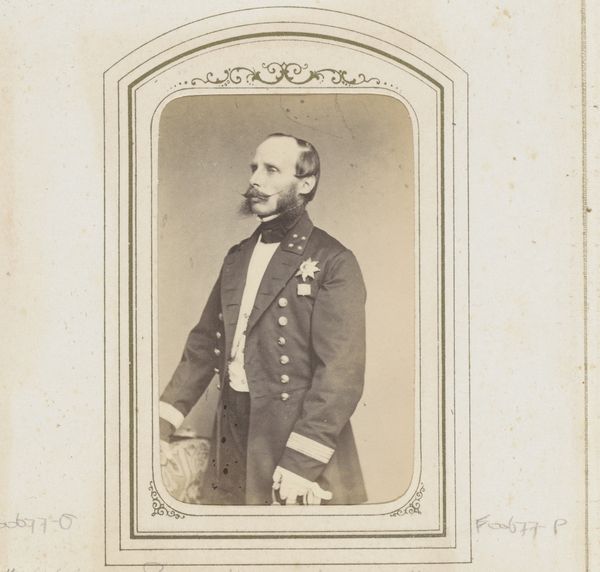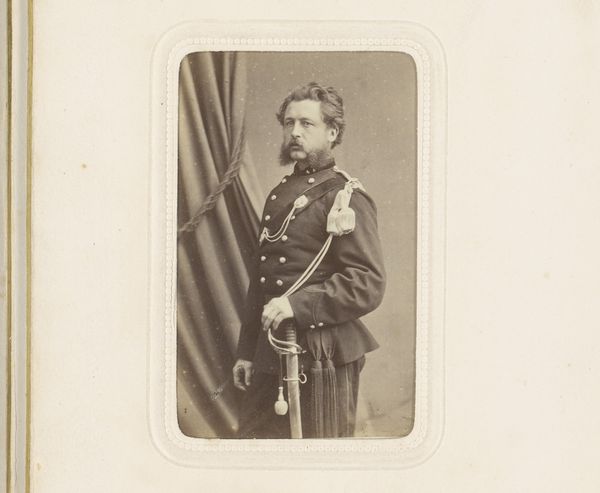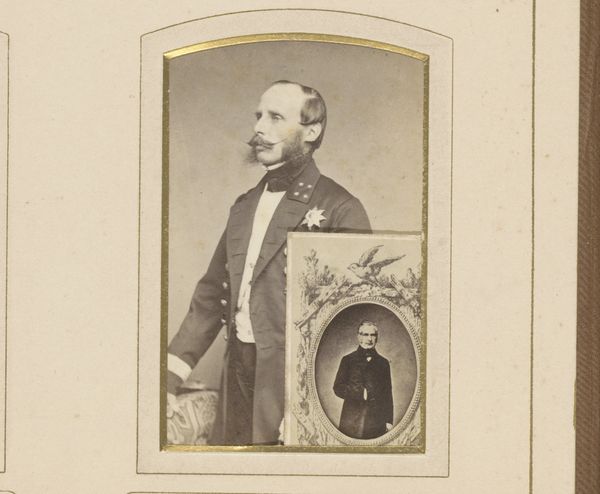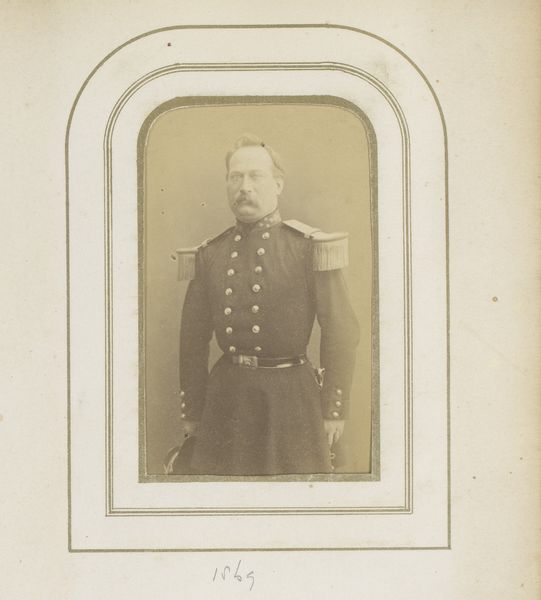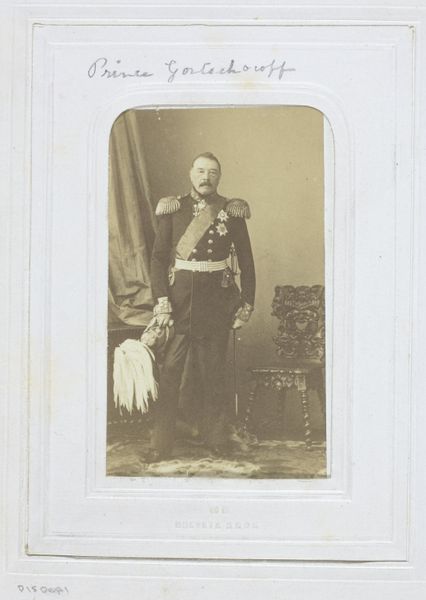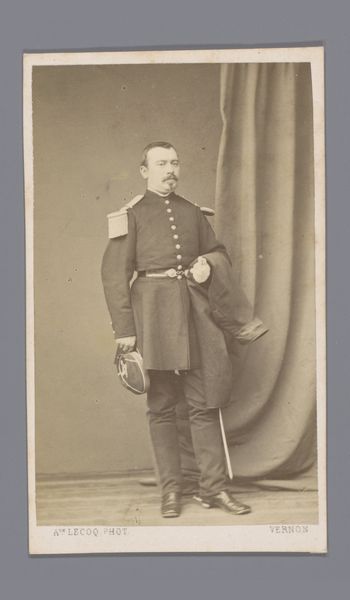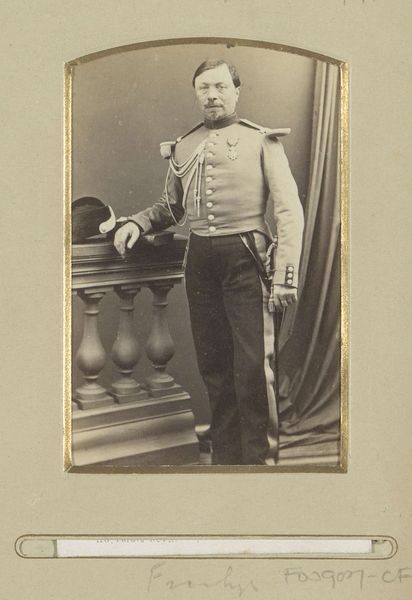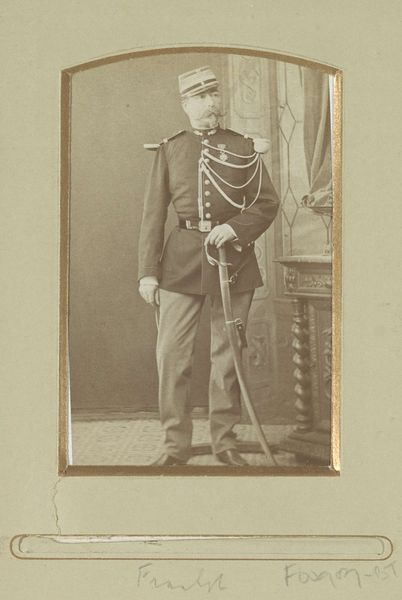
Dimensions: height 84 mm, width 51 mm
Copyright: Rijks Museum: Open Domain
Editor: Here we have a print titled "Portret van koning Willem III," dating from around 1855 to 1875. It appears to be a photograph, possibly a daguerreotype. He seems rather stiff, posed almost uncomfortably. What do you see in this piece? Curator: This photograph, rendered through the lens of burgeoning realism, serves not only as a portrayal of King Willem III, but also as a fascinating artifact reflecting the performance of power and masculinity in the 19th century. His rigid posture, the imposing military attire, and the strategic placement of symbols of authority are all carefully constructed elements meant to project an image of strength and dominance, ideas highly prevalent then. How does it speak to contemporary notions of leadership, especially in light of current debates around identity and representation? Editor: It seems like he’s trying to embody that very stoic, traditional ideal of leadership. Is there any subversion here, though? Anything that complicates that reading? Curator: Absolutely, and that's where the intersectional lens becomes crucial. Think about the power dynamics inherent in the act of portraiture itself. Who had access to be represented, and how did photography reinforce existing social hierarchies? This image, while seemingly straightforward, also silently excludes those who were historically marginalized – the colonized subjects, the working class, women. The very act of documenting the King’s image perpetuates an unequal power structure. Do you agree with that point? Editor: I hadn’t considered that. It is difficult to see past the surface image, especially when considering portraiture’s legacy and accessibility as something reserved for elites. This makes me question portraiture now – who gets to be seen, and how does that reflect broader societal power structures? Curator: Precisely! By deconstructing these visual representations, we begin to uncover the deeper social narratives embedded within them and how those dynamics are constantly changing and challenging the status quo.
Comments
No comments
Be the first to comment and join the conversation on the ultimate creative platform.
